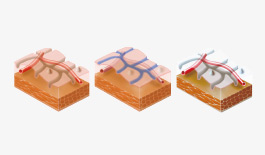
Latest News-UGI
Scientific Publications
Hoffman et al.
Acetic acid compared to i-scan imaging for detecting Barrett’s oesophagus - a randomized comparative trial.Gastrointest Endosc. 2014 Jan; 79(1):46-54.

Squamous cell cancer of the oesophagus
Early squamous cell cancer of the oesophagus is easily missed. In these flat lesions, it is also difficult to identify the margins of the tumor. In this patient i-scan was used to assess the extension of the mucosal cancer before performing endoscopic submucosal dissection.
Courtesy of Dr. Michael Häfner St. Elisabeth Krakenhaus, Austria

Gastric cancer
This video sequence demonstrates to observe characteristic of surface pattern with i-scan SE then switch to i-scan OE to observe vessel pattern. i-scan OE brought up better assessment of vessel as compared with chromo endoscopy. Following pathological result concluded mucosal cancer 8mm in size.
Courtesy of Prof.Tomoki Michida, Teikyo University, Japan

Normal duodenal architecture
This sequence demonstrates the normal villous architecture of the second part of the duodenum in detail using PENTAX HD+ with i-scan enhancement.
Courtesy of Dr. Rehan Haidry, UCLH, UK









